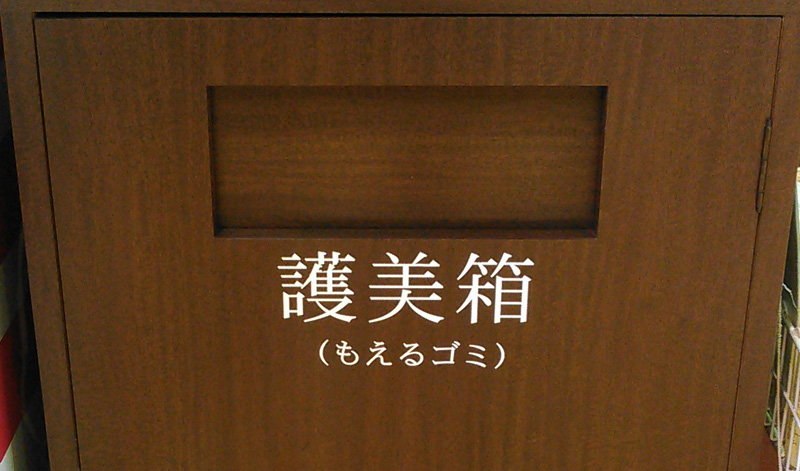Archive for Borrowing
February 17, 2016 @ 1:30 pm· Filed by Victor Mair under Borrowing, Dialects, Etymology, Topolects
I am fond of this expression and have often wondered how it arose. In my own mind, I have always associated it with the hissing of a cat and hysteria, but never took the time to try to figure out where it really came from. Today someone directly asked me about the origins of this quaint expression and proposed a novel solution, which I will present at the end of this post. First, however, let's look at current surmises concerning the problem.
Read the rest of this entry »
Permalink
February 12, 2016 @ 11:36 pm· Filed by Victor Mair under Borrowing, Etymology, Language and food, Lost in translation, Words words words
The following three items might well have been included in the previous post on Chinglish, but that one got to be rather long and unwieldy, so I'm treating these separately. In any event, I think that they merit the special treatment they are receiving here.
Read the rest of this entry »
Permalink
January 12, 2016 @ 5:44 pm· Filed by Victor Mair under Borrowing, Language and advertising, Writing systems
An ad for a new product of a Hong Kong cake shop went viral for taking pseudo-Japanese to the extreme:

Read the rest of this entry »
Permalink
December 12, 2015 @ 4:32 pm· Filed by Victor Mair under Borrowing, Language and culture, Taboo vocabulary
Bruce Balden was curious as to why the Chinese terms for "fire department" (xiāofáng duì 消防队) and "firefighting" (xiāofáng 消防) do not have the word for "fire" (huǒ 火) in them. I had thought about that long ago, but never made an attempt to determine why it is so. Now that Bruce has brought up this issue directly, I am curious how true it is for other languages of the world as well.
For East Asia, since Japan also uses the same expression (shōbō 消 防), it became a question of determining whether the modern terminology for firefighting developed first in China or in Japan.
Read the rest of this entry »
Permalink
December 10, 2015 @ 2:21 pm· Filed by Victor Mair under Borrowing, Signs, Topolects, Writing
Ryan Kilpatrick has an interesting article in Hong Kong Free Press:
"Taiwan city promises to ‘correct’ simplified road sign after public outcry" (12/7/15)
It includes this photograph, which illustrates some of the problems:

Read the rest of this entry »
Permalink
December 3, 2015 @ 7:02 am· Filed by Victor Mair under Borrowing, Grammar, Topolects, Writing systems
Andrew Peters noticed an interesting aspect of the concise little figure in this article: "Evolution of the first person pronoun in Japanese spoken language" (click to nicely embiggen). It claims to show which pronouns were in use in various eras (Nara [710–794], Heian [794–1185], Kamakura [1185–1333], Muromachi [1336–1573], Edo [1603–1868], Meiji/Taisho/Showa [1868-1989], and postwar). What Andrew discovered is that the two casual masculine pronouns ore おれ (俺) (this may even sound rude) and boku ぼく(僕) are, respectively, the oldest and newest pronouns in use today.
Read the rest of this entry »
Permalink
November 30, 2015 @ 5:21 am· Filed by Victor Mair under Borrowing, Pronunciation
From a colleague:
A question about quinoa. Linguistic, not gustatory or political-economic. How do / would you normally say it?
kee-NO-ah? kwee-NO-ah?
KEE-no-ah? KWEE-no-ah?
KEEN-wah? KWEEN-wah?
keen-WAH? kween-WAH?
(or? )
Read the rest of this entry »
Permalink
November 20, 2015 @ 11:47 am· Filed by Victor Mair under Announcements, Borrowing, Code switching
Zach Hershey saw the following announcement on WeChat from a Chinese student association at UC Irvine:

Read the rest of this entry »
Permalink
November 17, 2015 @ 10:26 pm· Filed by Victor Mair under Borrowing, Code switching
There is a lively March 25, 2015 lecture about the First Emperor of the Qin (260-210 BC), the ruler who unified China by force and bequeathed the name of his dynasty to China for all time.
The lecture, with the title "Qín shǐhuáng zài yǐnmán shénme? 秦始皇在隐瞒什么?" ("What was the First Emperor of the Qin hiding?"), is on YouTube. The name of the speaker is Luó Zhènyǔ 羅振宇. He's got the gift of gab, and is one of the best Chinese speakers I've ever heard. Luo was a journalism major, a field in which he earned both an M.A. and a Ph.D.
Read the rest of this entry »
Permalink
November 16, 2015 @ 1:57 pm· Filed by Victor Mair under Borrowing, Language and music
I have long been intrigued by the Chinese instrument called suǒnà 嗩吶 (double-reeded horn). Because of the sound and shape of the name, and the fact that the characters used to write it both have mouth radicals, indicating that they are being used to convey pronunciation rather than meaning, I have always suspected that suǒnà 嗩吶 was the transcription of a foreign word. This suspicion was underscored by the time (medieval period) and direction (from the Western Regions [as attested in wall paintings and plastic art]) that it entered the panoply of Chinese musical instruments. There are at least half a dozen different combinations of various characters for transcribing the sound of this word (see Hànyǔ dà cídiǎn 漢語大詞典 [Unabridged Dictionary of Sinitic], 3.461b]).
Read the rest of this entry »
Permalink
October 25, 2015 @ 4:04 pm· Filed by Victor Mair under Borrowing, Code switching, Morphology
Note from Gábor Ugray:
I just came across a hugely exciting conversation on Twitter, about English words mixed in with Chinese / adopted into Chinese speech – as seen in the subject line. There’s no easy way to extract conversations from Twitter, but it’s all in Liz Carter's feed today: https://twitter.com/withoutdoing
Read the rest of this entry »
Permalink
October 9, 2015 @ 10:07 am· Filed by Victor Mair under Borrowing, Morphology
A new wave of Sino-Japanese borrowings?
During the last century and a quarter or so, Chinese has absorbed a large number of borrowings from Japanese:
"Recent Japanese loanwords in Chinese" (7/22/13)
"'And the greatest Japanese export to China is…'" (8/21/12)
"Sino-Nipponica " (7/26/15)
"Metaphysics has ruined Chinese" (5/27/15)
Read the rest of this entry »
Permalink
September 27, 2015 @ 4:25 pm· Filed by Victor Mair under Borrowing, Variation, Writing systems
Nathan Hopson sent in this photograph of a trash can / rubbish bin in Nagoya, Japan:

Read the rest of this entry »
Permalink



